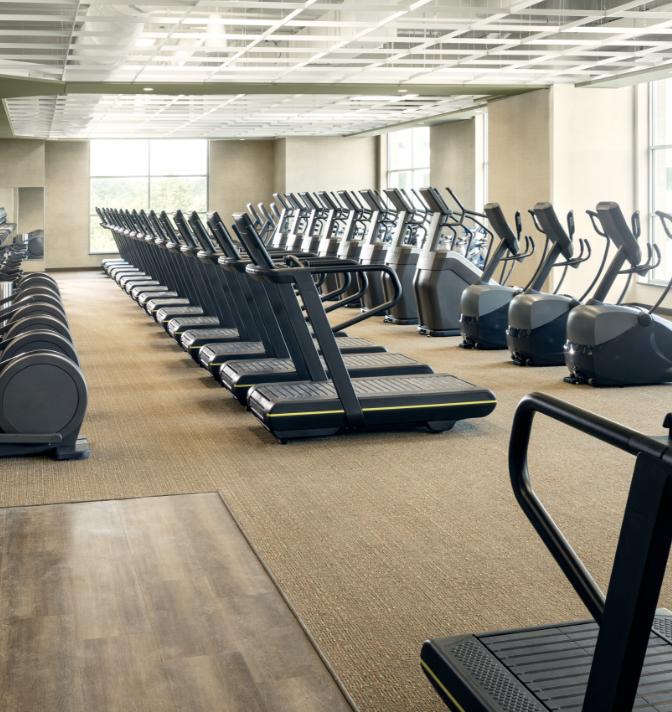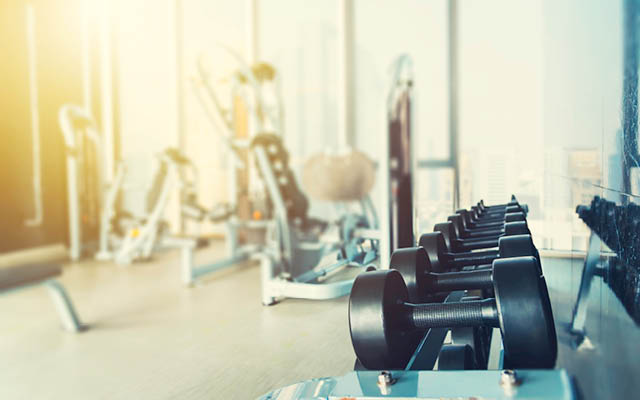It’s a common assumption that optimal metabolic function is synonymous with being thin. Those blessed with a “good” metabolism, the theory goes, can eat whatever they want and never worry about their weight. A “bad” metabolism must be hacked and overhauled in order to unlock fat burning and weight loss.
But metabolism affects far more than the number on the scale. “Metabolism is all of the complex biochemical processes that create cellular energy in order for your body to survive,” says exercise physiologist Mike T. Nelson, PhD, a researcher and fitness and nutrition educator.
In other words, metabolism is the body’s ability to take in fuel and process it to support life.
The measurement of metabolism is commonly broken down into two components: resting metabolic rate (RMR) and total daily energy expenditure (TDEE). Of the many factors that influence your RMR, or calories burned while at rest, the most influential are your body mass and composition. Simply put, the bigger you are, the more energy is required to keep you alive and breathing. Your RMR accounts for 60 to 75 percent of calorie-burning processes.
Your TDEE includes the energy burned to do everything beyond staying alive, such as doing household chores, working on a puzzle, taking your dog for a walk, playing with your kids, doing a workout, and even fidgeting.
A 2021 study in the journal Science shed new light on metabolic function, particularly how metabolism changes as we age. Despite popular belief, our metabolism doesn’t suddenly tank when we turn 30, causing weight gain (or weight-loss resistance) or other symptoms of a suboptimal metabolism: sluggishness, body-temperature dysregulation (always feeling hot or cold), joint pain, digestive issues, and mood disorders.
On average, the study showed, metabolism remains steady through adulthood, until about age 60, when it begins to dip each year — but only slightly. (Turn to page 12 in the January/February 2022 issue to learn more about how and when metabolism changes with age.)
That said, there is tremendous individual variation that can’t be accounted for in large-scale studies: “Two people with identical body masses could have vastly different metabolic rates,” explains Nelson.
For most people, trying to make sense of their metabolism and how it compares to others’ likely won’t lead to lasting positive change. Neither will taking extreme measures, such as cutting calories, overexercising, or using supplements that make empty promises of stimulating metabolism.
Focusing on holistic lifestyle improvements can be a more effective — and sustainable — way to support your unique metabolic circumstances.
When it comes to fitness, specifically, there are three ways you can support your metabolism. You’ll notice that they line up neatly with general recommendations that promote overall health — which brings us to an important reminder: “There are thousands of processes that can really impact how you feel every day,” says Samantha McKinney, RD, a Life Time dietitian and master trainer. “How your body burns calories is just one of the many barometers of health.”
1. Up Your NEAT
“The biggest factor you can change when it comes to metabolism is increasing your NEAT (nonexercise activity thermogenesis) — all the movements you do as part of your everyday life,” says Nelson.
It may sound too simple to be effective, but little things like walking, bending over to retrieve things, and fidgeting all add up.
Research suggests that those people we think are genetically blessed with a fast metabolism may in fact be genetically driven to move more, and recent studies on animals have identified areas of the brain that regulate NEAT.
“Some people may not be genetically driven to move, but we can teach that,” Nelson notes. Tracking steps is one way to build a habit that improves NEAT. “It’s not perfect, but it’s something you can modify and you have control over,” he adds.
2. Strength Train Consistently
The metabolic effect of individual workouts is “not very impressive,” Nelson says. “What matters more is looking at adaptations you get from exercise.” And nothing beats strength training when it comes to driving adaptation.
Muscle burns more calories than fat does, so simply having a more muscular physique can boost metabolism. The difference isn’t huge, though: A pound of muscle burns six calories a day, while a pound of fat burns about two calories a day.
The more convincing reason to emphasize resistance training is that it helps maintain strength and prevent muscle loss, known as sarcopenia, which is especially common as we age.
As people get older, they tend to think their metabolism has slowed on its own. But, in reality, their muscle mass and NEAT have decreased, which could be the culprit. (For more on the benefits of strength training as you age, see “Fit for Life: You’re Never Too Old to Get Moving“.)
3. Vary Your Intensity
Exercise can provide short-term metabolic boosts, thanks to a phenomenon commonly known as the afterburn effect or excess postexercise oxygen consumption (EPOC). In layperson’s terms, EPOC is the body’s fat-burning response to exercise, which can continue for several hours after a workout is completed.
High-intensity interval training (HIIT) typically delivers a greater EPOC effect than steady-state forms of cardio and strength training, but McKinney and Nelson warn against driving yourself into the ground while chasing an EPOC burn. Very-high-intensity work isn’t appropriate for folks dealing with adrenal issues, extreme fatigue, or sluggishness; moreover, the short-term metabolic effect is negligible in the grand scheme.
Rather, Nelson advises incorporating higher-intensity work into a consistent routine that prioritizes NEAT and strength training.
WEBEXTRA
Beyond Fitness
While regular exercise is important for metabolism, other factors — such as nutrition and recovery — play critical roles.
Eat Enough Protein
Protein prevents you from losing muscle mass, and, in conjunction with regular strength training, helps with building muscle, which can positively influence metabolism. And although it’s not a huge effect, protein also requires more energy to digest than carbs or fat, which serves to stoke the metabolic fire. Nelson recommends aiming for at least .7 grams of protein per pound of bodyweight.
Manage Chronic Stress
“Your body’s hormonal response to chronic stress or lack of sleep (or both) undoubtedly impacts nearly every aspect of metabolism,” says Samantha McKinney, RD, a Life Time dietitian and master trainer. Mike T. Nelson, PhD, a researcher and fitness and nutrition educator, suggests using a heart-rate monitor to track your HRV (heart-rate variability), a measure of the variation in time between each heartbeat. If your body is in a fight-or-flight mode, the variation between subsequent heartbeats is low, whereas in a relaxed state the variation is higher. Monitoring HRV can help you become more aware of stressors so you can address them.
Get Sufficient Sleep
Want to see your metabolism plummet? Cut back on your shuteye. Sleep has a profound effect on what we eat, how much we move, and how our body uses fuel. “When you’re consistently doing everything ‘right’ and you’re still not seeing progress toward your goals, it almost always boils down to sleep quality, sleep quantity, and overall stress management,” McKinney says.
Care for Your Thyroid
Your thyroid is often considered the “master of metabolism,” says McKinney. This small gland located in the front of your neck creates hormones that tell the body’s cells how much energy to use. If you’re taking care of your body’s movement, nutrition, sleep, and mental health needs and still experiencing symptoms of metabolic disfunction, McKinney says, consider working with your physician for a comprehensive evaluation of your thyroid function and hormone levels.
This article originally appeared as “Move for Your Metabolism” in the January/February 2022 issue of Experience Life.






This Post Has 0 Comments